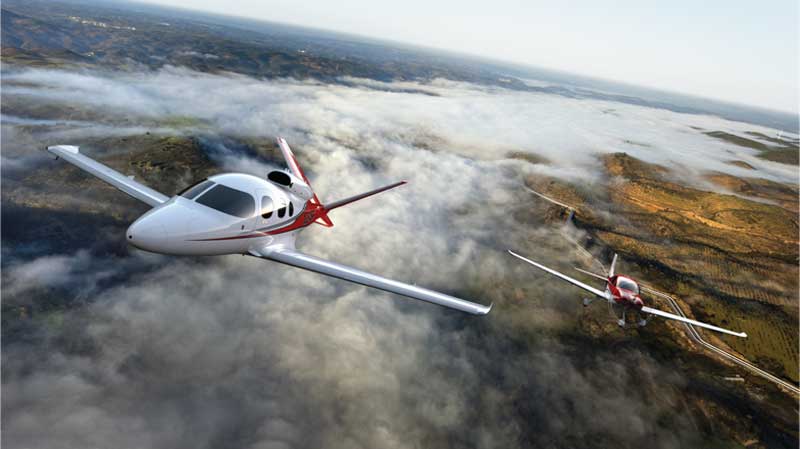Cirrus Aircraft is one of the few winners in the latest set of figures of General Aviation aircraft shipments, released today by the General Aviation Manufacturers Association (GAMA). Overall, shipments of all GA aircraft fell 3.9%, with piston-engine aircraft down by 4.9%.
Cirrus reported shipments of 317 SR piston-engine aircraft, showing steady growth since the economic crisis of 2009. Cirrus’s total shipments of 320 included three Vision jets.
GAMA chairman Simon Caldecott, president and CEO of Piper Aircraft, announced that aircraft shipments globally fell from 2,331 units in 2015 to 2,241 units in 2016 from the same reporting companies, a fall of 3.9%. Aircraft billings (value) declined 14.1%, from $24.1 billion to $20.7 billion.
Business jet shipments in 2016 were at their lowest number since 2004 at 661 units delivered, compared to 718 units in 2015. Turboprop airplane shipments provided a bright spot, increasing from 557 units in 2015 to 576 units in 2016 for the same reporting companies, a 3.4% increase.
Piston airplane shipments declined from 1,056 units in 2015 to 1,004 units in 2016, a reduction of 4.9% for the same reporting companies.
Worldwide rotorcraft shipments fell 16.9%, from 1,036 units in 2015 to 861 units in 2016. Rotorcraft billings declined from $4.7 billion in 2015 to $3.6 billion in 2016. Turbine helicopter shipments, based on initial data, declined from 757 units in 2015 to 637 units in 2016. Piston helicopter shipments declined from 279 units in 2015 to 224 units in 2016.
“The 2016 year-end results were disappointing overall, although we did see some blue sky in the turboprop sector,” said GAMA president and CEO Pete Bunce.
“As we look toward 2017 and beyond, we are optimistic about the future and encouraged by the number of companies investing in innovative research and development programs and planning to bring new products to market.
“GAMA is actively working to create the regulatory environments that will make it more efficient and effective for manufacturers to offer new products and technologies to their customers, enhancing safety, efficiency, connectivity, and comfort,” Bunce continued.
“We are encouraged by the completion of the Part 23 rule by the U.S. Federal Aviation Administration and look forward to similar actions in Europe, as well as adaptation of these rule-making principles to rotorcraft and transport category airplanes.
“However, to enable and sustain that growth, policymakers and regulators must continue to work with industry to streamline regulatory processes and facilitate the global flow of aviation products.”
GAMA












